Abstract
Isolated human plasma very low density, intermediate density, and high density lipo-proteins at physiologic concentrations have been demonstrated in the preceding report to induce significant increases in the procoagulant activity of human peripheral blood mononuclear cells in vitro, whereas low density lipoprotein did not. The monocyte was identified in this study by cellular fractionation and by direct cytologic assays as the source of this inducible activity, thus identifying the procoagulant activity as a monokine. The generation of these lipoprotein-induced procoagulant monokines was entirely dependent upon the presence of lymphocytes. Isolated lymphocytes that had been exposed to the stimulatory lipoproteins could induce monocytes to produce the procoagulant activity, whereas neither the culture medium from lipoprotein-stimulated lymphocytes, homogenates of lymphocytes, nor other cells such as platelets could substitute for this requirement. The interaction of the stimulatory lipoproteins with lymphocytes was rapid, reaching completion within 30 min, and was equally effective at either 4° or 37°C. Low density lipoprotein did not stimulate lymphocytes to induce monocyte procoagulant activity, but did actively suppress the production of the procoagulant monokines induced by each of the stimulatory lipoproteins, as well as bacterial lipopolysaccharide. The monocyte was identified as the cell sensitive to low density lipoprotein suppression, and no suppression of lymphocyte triggering was observed. These observations on the interaction of plasma lipoproteins with lymphocytes and monocytes in vitro introduce two new regulatory events by which plasma lipoproteins influence the function of cells, and define a regulatory network by which certain lipoprotein classes trigger lymphocytes, which can in turn induce monocytes to express procoagulant activity. Only this latter phase is subject to lipoprotein suppression by physiologic concentrations of low density lipoprotein.
Full text
PDF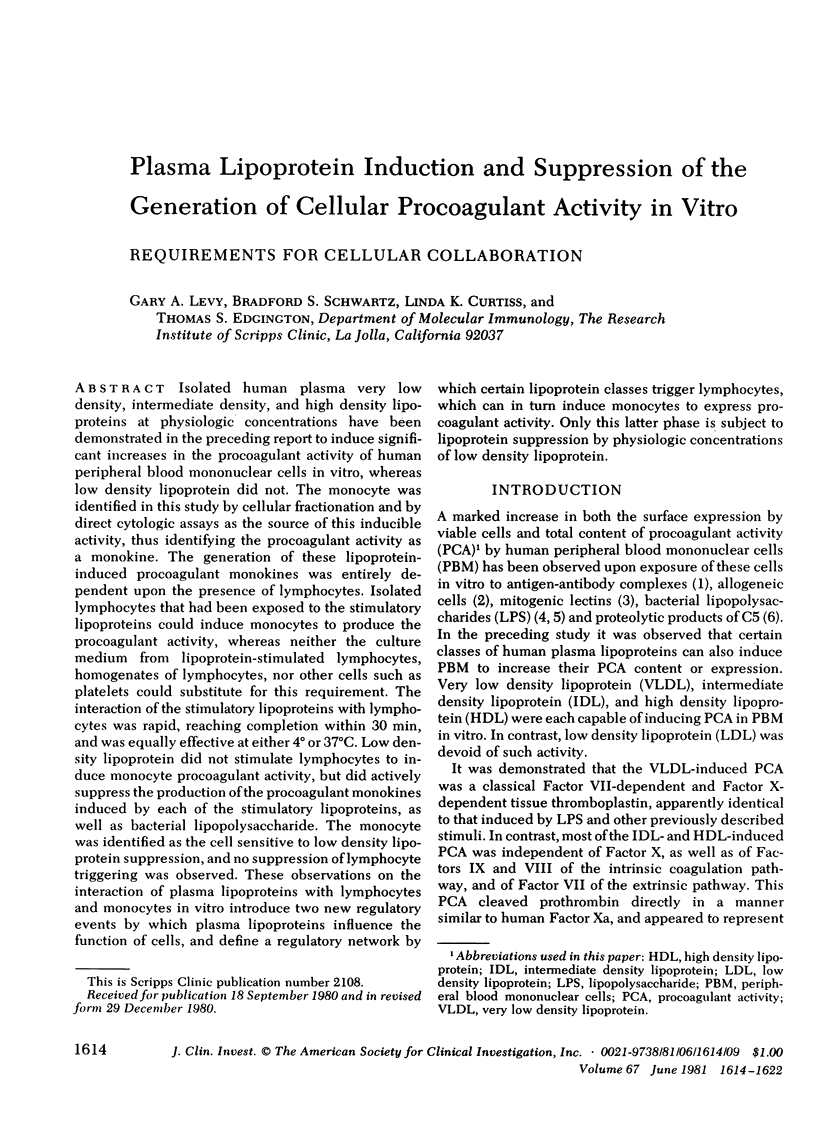
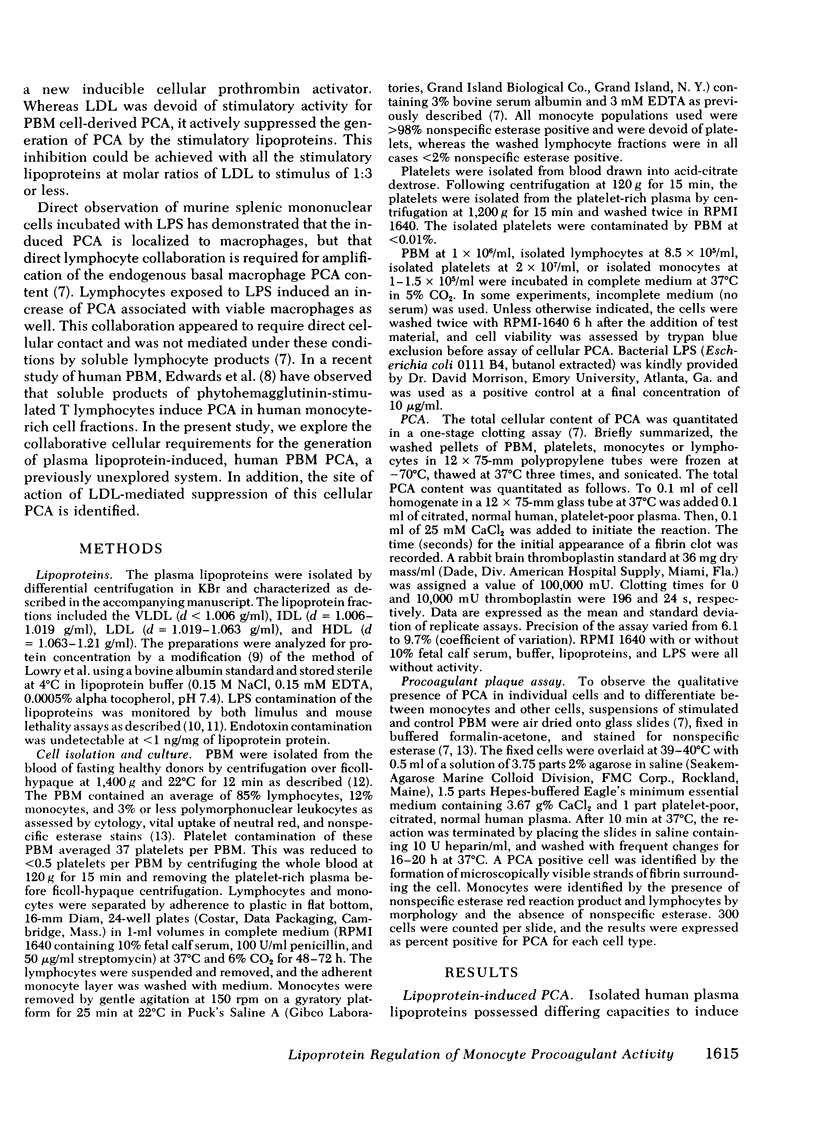
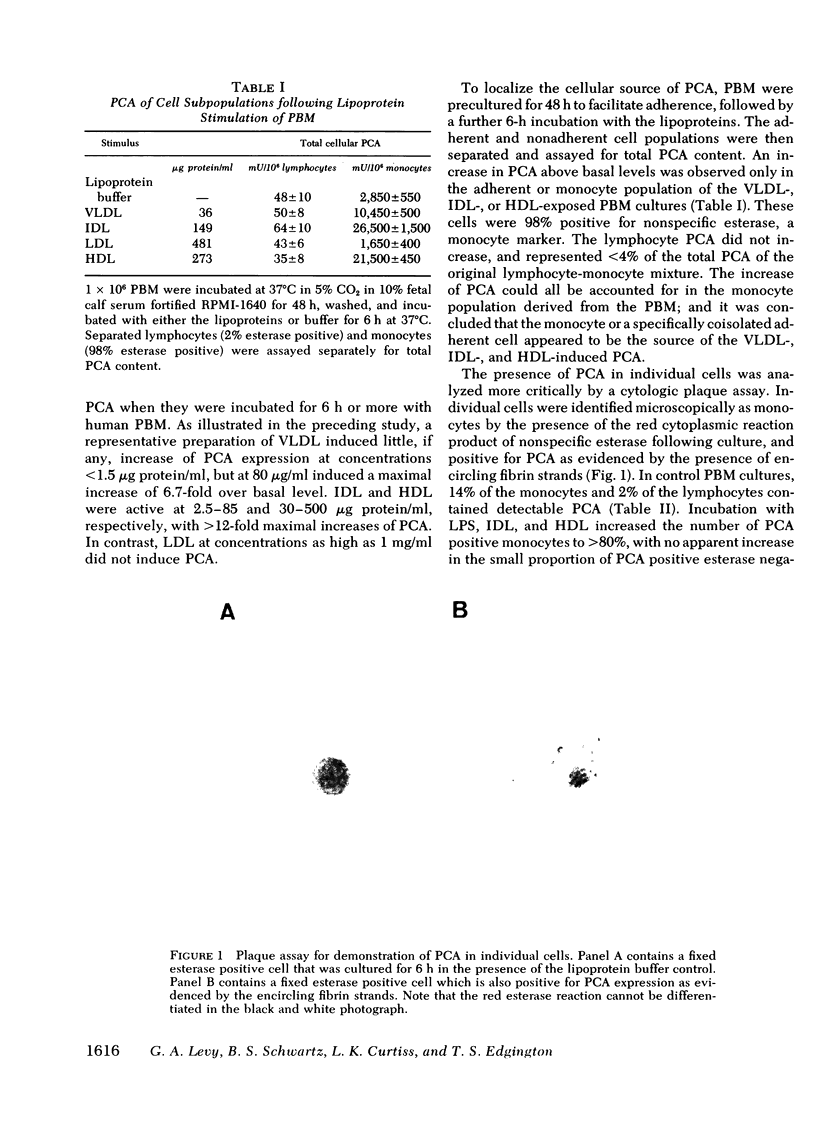
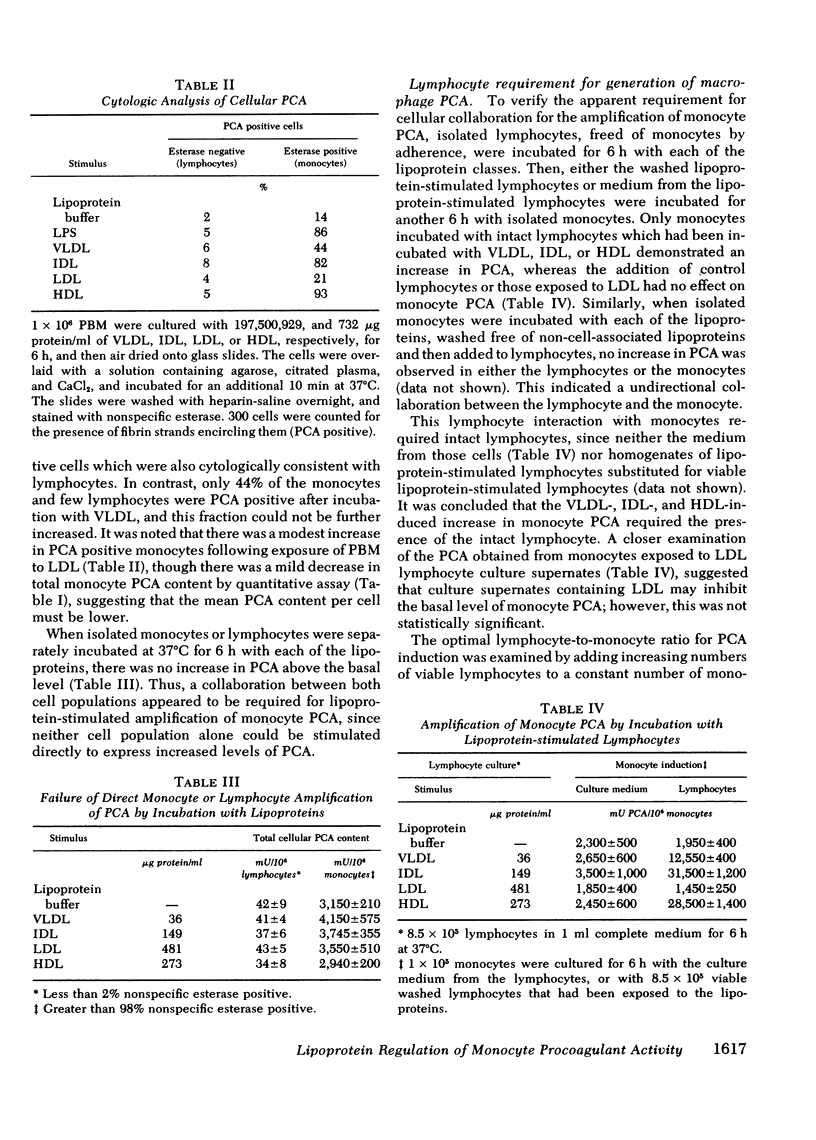
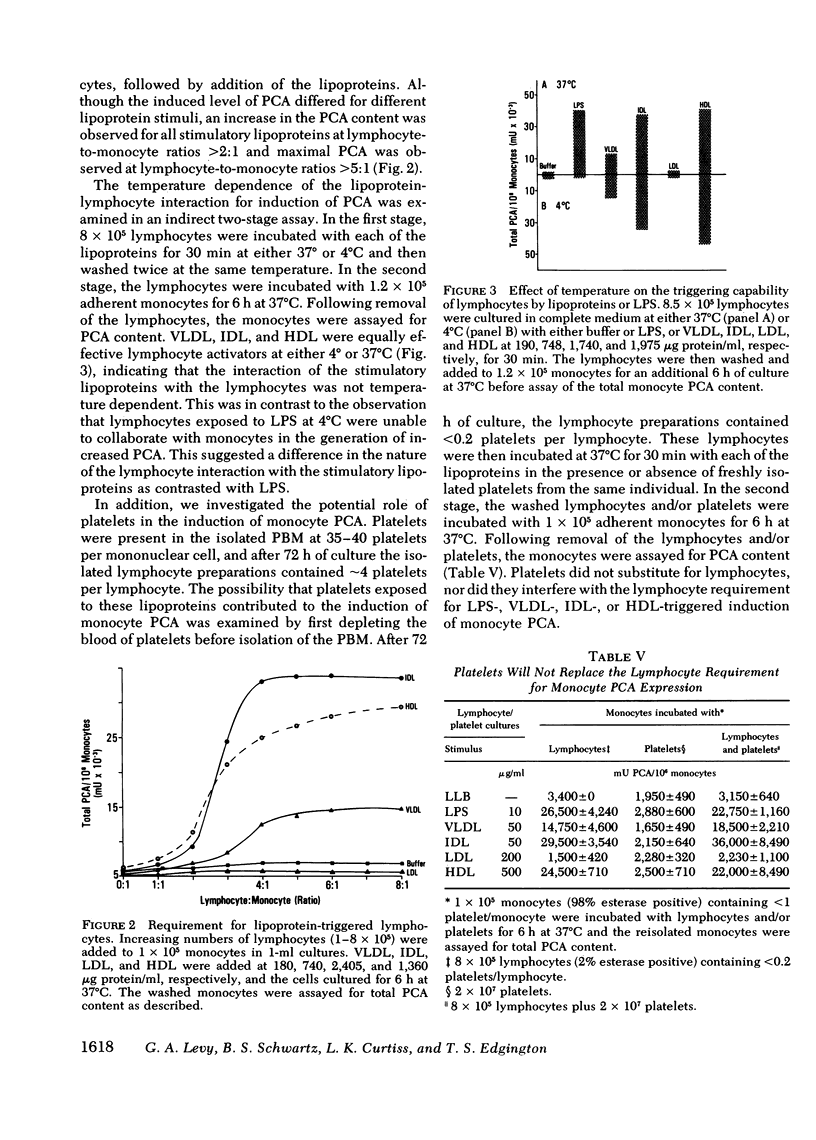
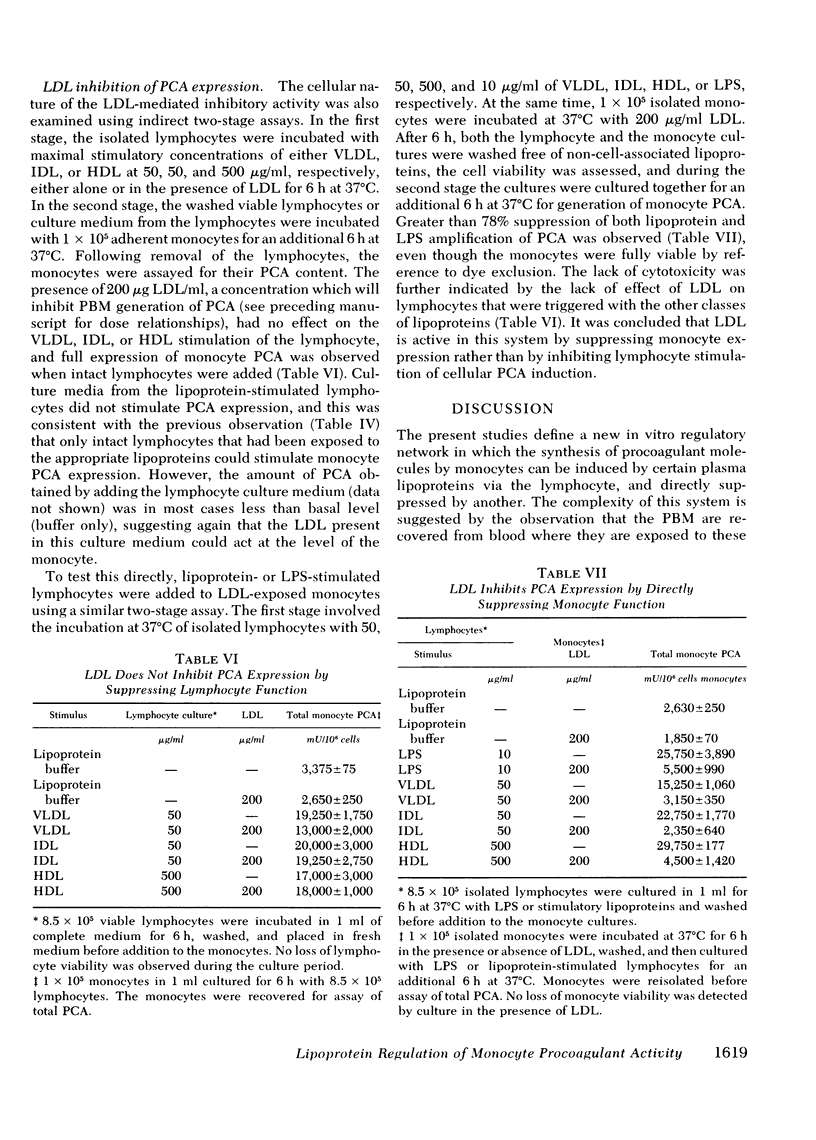
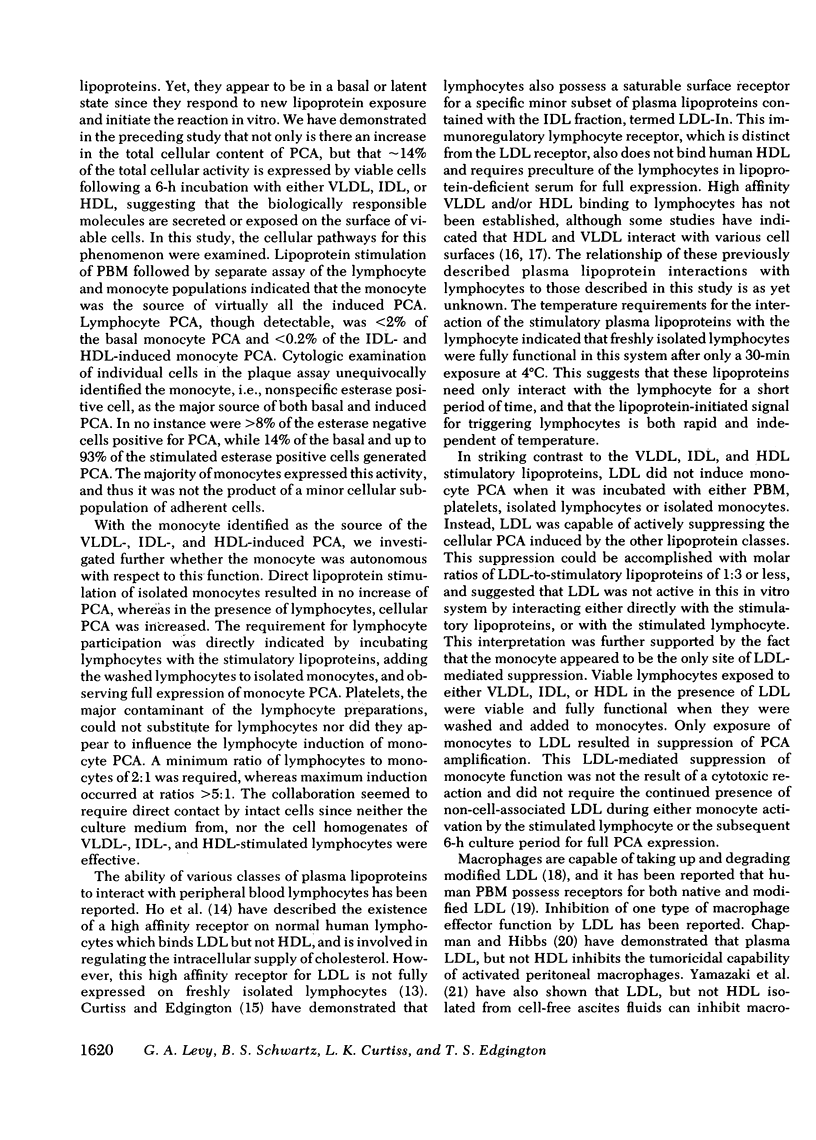
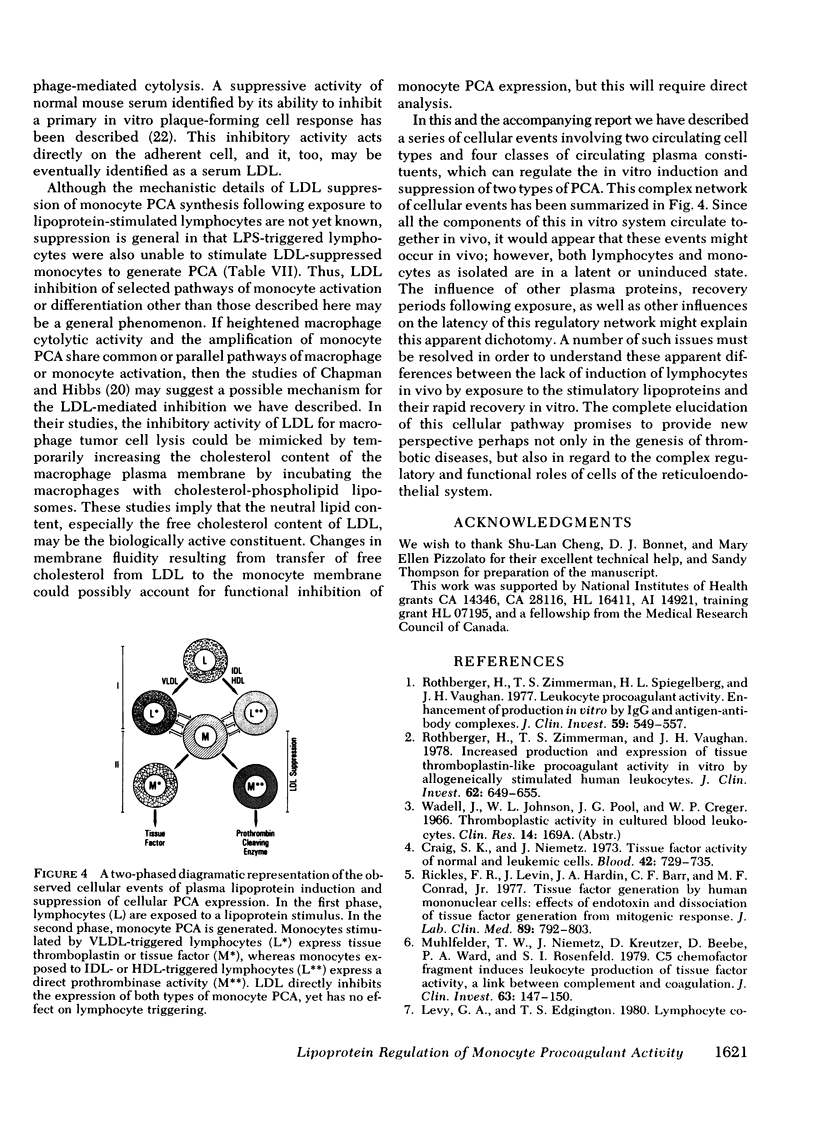
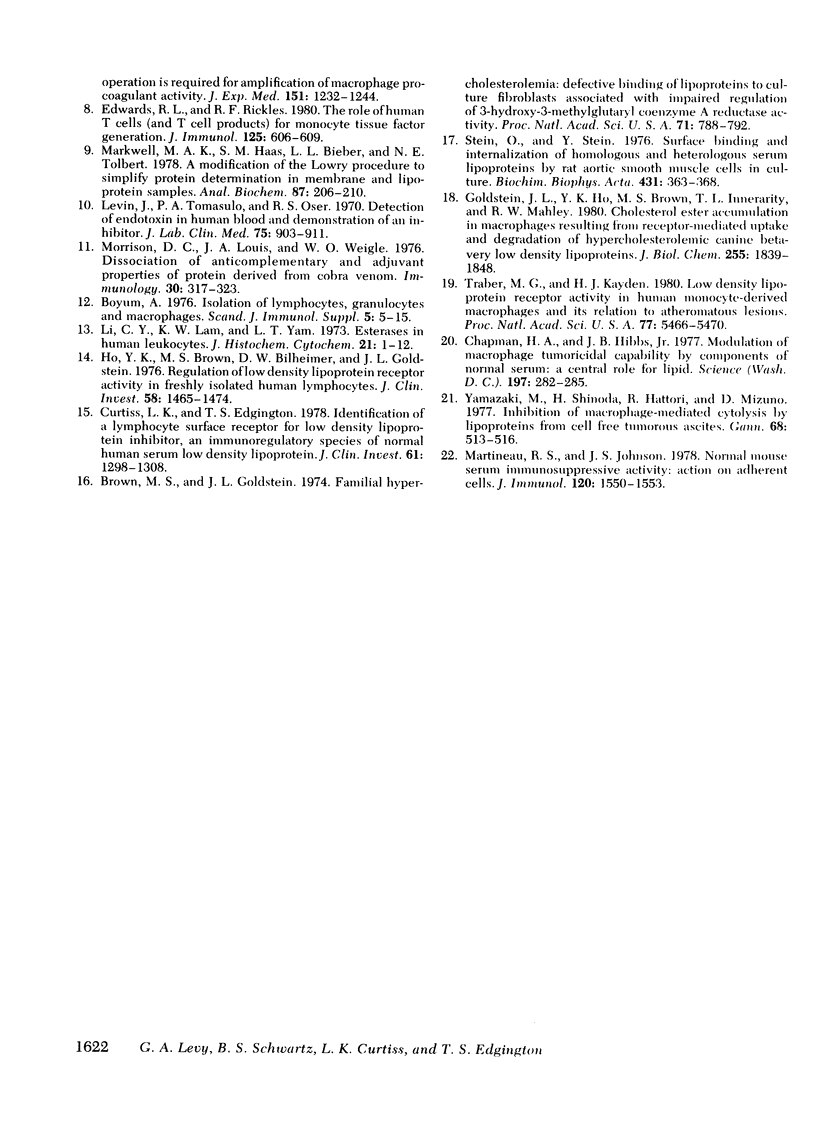
Images in this article
Selected References
These references are in PubMed. This may not be the complete list of references from this article.
- Brown M. S., Goldstein J. L. Familial hypercholesterolemia: defective binding of lipoproteins to cultured fibroblasts associated with impaired regulation of 3-hydroxy-3-methylglutaryl coenzyme A reductase activity. Proc Natl Acad Sci U S A. 1974 Mar;71(3):788–792. doi: 10.1073/pnas.71.3.788. [DOI] [PMC free article] [PubMed] [Google Scholar]
- Bøyum A. Isolation of lymphocytes, granulocytes and macrophages. Scand J Immunol. 1976 Jun;Suppl 5:9–15. [PubMed] [Google Scholar]
- Chapman H. A., Jr, Hibbs J. B., Jr Modulation of macrophage tumoricidal capability by components of normal serum: a central role for lipid. Science. 1977 Jul 15;197(4300):282–285. doi: 10.1126/science.195338. [DOI] [PubMed] [Google Scholar]
- Curtiss L. K., Edgington T. S. Identification of a lymphocyte surface receptor for low density lipoprotein inhibitor, an immunoregulatory species of normal human serum low density lipoprotein. J Clin Invest. 1978 May;61(5):1298–1308. doi: 10.1172/JCI109047. [DOI] [PMC free article] [PubMed] [Google Scholar]
- Edwards R. L., Rickles F. R. The role of human T cells (and T cell products) for monocyte tissue factor generation. J Immunol. 1980 Aug;125(2):606–609. [PubMed] [Google Scholar]
- Garg S. K., Niemetz J. Tissue factor activity of normal and leukemic cells. Blood. 1973 Nov;42(5):729–735. [PubMed] [Google Scholar]
- Goldstein J. L., Ho Y. K., Brown M. S., Innerarity T. L., Mahley R. W. Cholesteryl ester accumulation in macrophages resulting from receptor-mediated uptake and degradation of hypercholesterolemic canine beta-very low density lipoproteins. J Biol Chem. 1980 Mar 10;255(5):1839–1848. [PubMed] [Google Scholar]
- Ho Y. K., Brown S., Bilheimer D. W., Goldstein J. L. Regulation of low density lipoprotein receptor activity in freshly isolated human lymphocytes. J Clin Invest. 1976 Dec;58(6):1465–1474. doi: 10.1172/JCI108603. [DOI] [PMC free article] [PubMed] [Google Scholar]
- Levin J., Tomasulo P. A., Oser R. S. Detection of endotoxin in human blood and demonstration of an inhibitor. J Lab Clin Med. 1970 Jun;75(6):903–911. [PubMed] [Google Scholar]
- Levy G. A., Edgington T. S. Lymphocyte cooperation is required for amplification of macrophage procoagulant activity. J Exp Med. 1980 May 1;151(5):1232–1244. doi: 10.1084/jem.151.5.1232. [DOI] [PMC free article] [PubMed] [Google Scholar]
- Li C. Y., Lam K. W., Yam L. T. Esterases in human leukocytes. J Histochem Cytochem. 1973 Jan;21(1):1–12. doi: 10.1177/21.1.1. [DOI] [PubMed] [Google Scholar]
- Markwell M. A., Haas S. M., Bieber L. L., Tolbert N. E. A modification of the Lowry procedure to simplify protein determination in membrane and lipoprotein samples. Anal Biochem. 1978 Jun 15;87(1):206–210. doi: 10.1016/0003-2697(78)90586-9. [DOI] [PubMed] [Google Scholar]
- Morrison D. C., Louis J. A., Weigle W. O. Dissociation of anticomplementary and adjuvant properties of proteins derived from cobra venom. Immunology. 1976 Mar;30(3):317–323. [PMC free article] [PubMed] [Google Scholar]
- Muhlfelder T. W., Niemetz J., Kreutzer D., Beebe D., Ward P. A., Rosenfeld S. I. C5 chemotactic fragment induces leukocyte production of tissue factor activity: a link between complement and coagulation. J Clin Invest. 1979 Jan;63(1):147–150. doi: 10.1172/JCI109269. [DOI] [PMC free article] [PubMed] [Google Scholar]
- Rickles F. R., Levin J., Hardin J. A., Barr C. F., Conrad M. E., Jr Tissue factor generation by human mononuclear cells: effects of endotoxin and dissociation of tissue factor generation from mitogenic response. J Lab Clin Med. 1977 Apr;89(4):792–803. [PubMed] [Google Scholar]
- Rothberger H., Zimmerman T. S., Spiegelberg H. L., Vaughan J. H. Leukocyte procoagulant activity: enhancement of production in vitro by IgG and antigen-antibody complexes. J Clin Invest. 1977 Mar;59(3):549–557. doi: 10.1172/JCI108670. [DOI] [PMC free article] [PubMed] [Google Scholar]
- Rothberger H., Zimmerman T. S., Vaughan J. H. Increased production and expression of tissue thromboplastin-like procoagulant activity in vitro by allogeneically stimulated human leukocytes. J Clin Invest. 1978 Sep;62(3):649–655. doi: 10.1172/JCI109172. [DOI] [PMC free article] [PubMed] [Google Scholar]
- Traber M. G., Kayden H. J. Low density lipoprotein receptor activity in human monocyte-derived macrophages and its relation to atheromatous lesions. Proc Natl Acad Sci U S A. 1980 Sep;77(9):5466–5470. doi: 10.1073/pnas.77.9.5466. [DOI] [PMC free article] [PubMed] [Google Scholar]
- Yamazaki M., Shinoda H., Hattori R., Mizuno D. Inhibition of macrophage-mediated cytolysis by lipoproteins from cell-free tumorous ascites. Gan. 1977 Aug;68(4):513–516. [PubMed] [Google Scholar]



